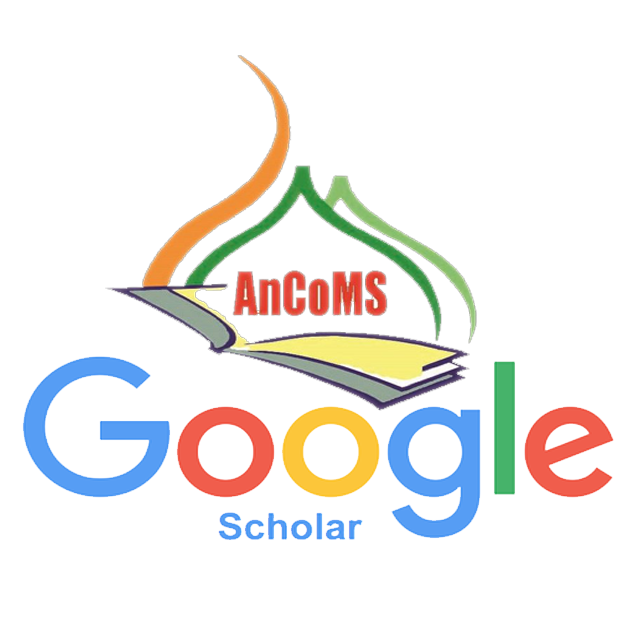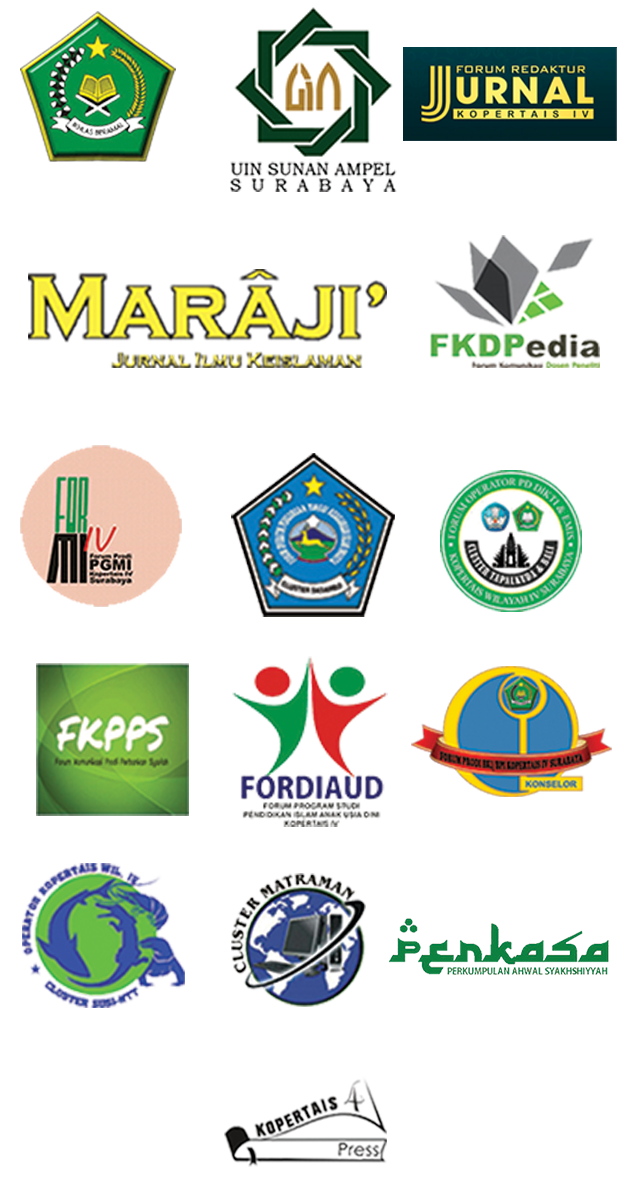Menangkal Paham Radikalisme Melalui Komunikasi Dua Arah pada Sekolah Islam dalam Perspektif Pendidikan Muslim Polity
Abstract
The purpose of this article was to discuss the role of public relations to prevent radicalism through two-way communication at Islamic schools in the educational perspective of Muslim polity. Islamic schools in the implementation of public relations led by the head of publicist unit. It build a strategic of communication channel management of two-way communication model with the advantage of technological developments in the era of Industrial revolution 4.0. One of them is the management development strategy based on two-way digital communication and social media in an effort to ward off the radicalism at Islamic school. Construction of two-way communication is often dominated by two-way communication of the asymmetric model. This article revealed various research findings of the school public relation role in the Islamic education in building the two-way communication. The findings of this research study average showed a tendency of Islamic school more intensive build the asymmetric models of two-way communication, where the communication channel functioned more dominant for the promotion of Islamic school positive image than the counter of radicalism.. The transaction of communication in the relationship management in which oriented to strengthening, understanding, and awareness of all staff to compensate for the promotion of public relations with wish-fulfillment Islamic schools should also be balanced with the prevention of radicalism into the Islamic education. In this way, the transaction is expected in the new two-way communication that can run balanced and symmetrical as a theory Grunig
Downloads
References
Aslan & Karip. Okul müdürlerinin liderlik standartlarının geliştirilmesi. Kuram ve Uygulamada Eğitim Yönetimi, 2014..20 (3),255-279.
Balta-Peltekoğlu, F. (2012). Halkla ilişkiler nedir? 7. Baskı İstanbul: Beta.
Carlsmith, L., & Railsback, J.. The power of public rela- tions in schools. Portland: Northwest Regional Educational Laboratory. 2001. P. 39
Coombs, W. T., & Holladay, S, J.. Public relations’ Relationship Identity” in research: Enlightenment or illusion. Public relations Review, Volume 41, Issue 5, December 2015, 689–695.
Dutta, M. J. Public relations in a global world: culturally centred theory and praxis. Asia Pacific Public relations Journal, Volume 14, No. 1 & 2,2014, 21-31.
Ediger, D. M.. Effective school public relations. Education, 2001, 121 (4), 743-750.
Ehteshami, Anoushiravan. "Islam, Muslim polities and democracy"Democratization 11.4 (2004): 90-110.
Gül, İ. Türk eğitim sistemi ve okul yönetimi. Samsun: Ceylan Ofset. 2013, 25-33
Gregory, A.. Practitioner-leaders’ representation of roles: The Melbourne Mandate. Public relations Review, Volume 41, Issue 5, December 2015, 598–606.
Grunig, J. E. Furnishing the Edifice: Ongoing research on public relations as a strategic management function. Journal of Public relations Research, 2006, 18(2),151–176.
Grunig, J. E., & Grunig, L. A.. Public relations excellence 2010. Journal of Professional Communication 1(1):41-54, 2011. Retrieved from https://www.researchgate.net/publication/254626778, 30 November 2016.
Gutiérrez-García, E., Recalde, M., & Piñera-Camacho, A.. Reinventing the wheel? A comparative overview of the concept of dialogue. Public relations Review, Volume 41, Issue 5, December 2015, 744-753.
Huang, J., & Yang, A.. Implementing dialogic communication: A survey of IPR, PRSA and IABC members. Public relations Review, Volume 41, Issue 3, September 2015, 376-377.
Hutton, J. G. The definition, dimensions, and domain of public relations. Public relations Review, 1999 25 (2), 199-214.
Karpat Aktuğlu, I.. Marka yönetimi-güçlü ve başarılı markalar için temel ilkeler. İstanbul: İletişim Yayınları. 2004. 96
Kılıç, S. Z.. Özel Türk ilköğretim okullarında halkla ilişkiler etkinliklerinin incelenmesi (Yayınlanmamış Yüksek Lisans Tezi). Yıldız Teknik Üniversitesi, Sosyal Bilimler Enstitüsü, İstanbul. 2006: 74
Kosiczky, B. & Mullen, C. A.. Humor in high school and the role of teacher leaders in school public relations. Journal of School Public relations, 2013. 34 (1), 6-39.
Kowalski, T. J.. Public relations in educational organizations: Practice in an age of information and reform. Englewood Cliffs, NJ: Merrill. 1996: 45
Kowalski, T. J. Public relations in schools. Boston: Pearson. Oxford, 2011: 35
Lane. A. Toward understanding the (lack of) significance of dialogue to the practice of public relations. Asia Pacific Public relations Journal, Volume 15, No. 1, 2014. 123-142.
Macnamara, J Public relations in an interactive age: the need for new practices, not just new media. Asia Pacific Public relations Journal, Volume 2009. 10, 1-15.
Macnamara, J.. Corporate and organisational diplomacy: an alternative paradigm to PR. Journal of Communication Management, Vol. 16 Issue 3, 2012, 312-325.
Macnamara, J.. Organisational listening: A vital missing element in public communication and the public sphere. Accessed on academia. org on 27 January 2016. https://www.academia.edu/14232522/Organisational_listening _A_vital_missing_element_in_public_communication_and_the_public_spher.
Masud, Muhammad Khalid. "Being Muslim in a non‐Muslim polity: three alternate models." Institute of Muslim Minority Affairs. Journal 10.1 (1989): 118-128.
Nye, J. S. The new public diplomacy. Project Syndicate, available at: https://www.project-syndicate.org/commentary/the-new-public-diplomacyAccessed 2 January 2016.
National School Public relations Association. (NSPRA, 2002). Raising the bar for school PR: New standards for the school public relations profession. Retrieved from http://www.nspra.org/files/docs/StandardsBooklet.pdf. 2002. 28.
Pieczka, Magda.. Public relations as dialogic expertise. Journal of Communication Management, Vol.15 (2), 2011, 108-124.
Tianping, Y.. On the development of schools' external public relations in China. International Journal of Leadership in Education, 6 (2), 2003, 185-191.
Tutkun, Ö. F. & Köksal, E. A. Okul –aile işbirliğinde yeni yaklaşımlar. Eğitim Araştırmaları Dergisi. 2000. .8, 216–224.
Copyright (c) 2019 Novi Yanti, Reflianto Reflianto

This work is licensed under a Creative Commons Attribution-ShareAlike 4.0 International License.









